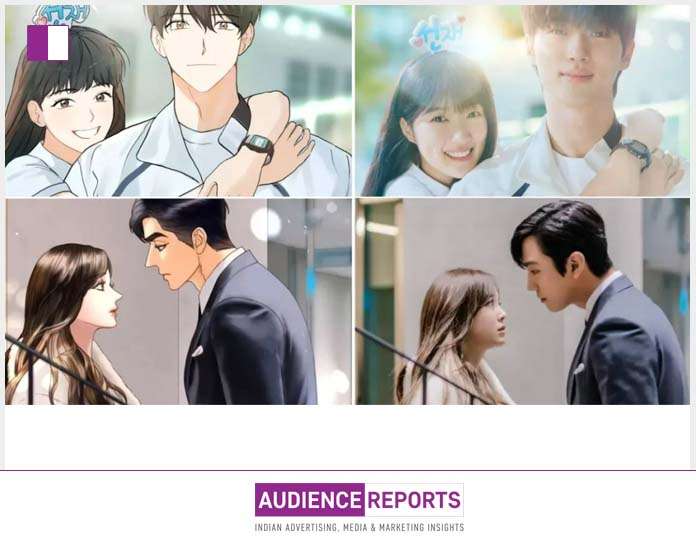KOREAN dramas, or K-dramas, have become a global phenomenon, captivating audiences with their unique blend of romance, suspense, and cultural insights. But behind the captivating storylines and talented actors lies another key ingredient – webtoons. These digital comics, specifically designed for mobile devices, have become a treasure trove of source material for K-drama creators, influencing everything from Lovely Runner to Business Proposal. This surge in webtoon adaptations begs the question: why are so many of our favorite K-dramas based on these digital comics?

Aanchal Sharma, a seasoned entertainment journalist at Screenbox.in, has expertly decoded the reasons behind this trend. With her in-depth analysis, Sharma explores how webtoons, with their rich narratives and vibrant visuals, seamlessly transition into the serial television format, creating a ready-made storyboard for screen adaptation. Her explorations delve into how these digital comics cater not just to traditional comic lovers but also to a broader audience seeking diverse storytelling that combines romance, suspense, and authentic cultural insights.
The Rise Of Webtoons
Webtoons, a portmanteau of “web” and “cartoon,” offer a unique reading experience. Unlike traditional comics, they are optimized for vertical scrolling on mobile devices, perfectly adapting to our on-the-go lifestyles. This accessibility has fueled their immense popularity in South Korea, where smartphone penetration is exceptionally high. Webtoons offer a diverse range of genres, from heart-fluttering romance to heart-stopping thrillers, catering to a wide audience.
The mid-2010s marked a turning point, with webtoons becoming a coveted source for K-dramas. Dramas like Kingdom, a compelling zombie apocalypse story, and Sweet Home, a chilling tale of monstrous transformations, showcased the potential of webtoons to translate seamlessly to the small screen.
The success of these adaptations opened the floodgates, leading to a wave of webtoon-inspired K-dramas like Hellbound (exploring themes of faith and social control), “D.P.” (a poignant social commentary on military hazing), and the heartwarming “Itaewon Class” (celebrating resilience and entrepreneurial spirit).
Reaching New Audiences
The marriage of webtoons and K-dramas isn’t just a domestic phenomenon. Streaming platforms like Netflix and Viki have been instrumental in bringing these stories to a global audience. K-dramas based on webtoons offer a double dose of cultural discovery – viewers get immersed in Korean storytelling while also experiencing the unique narrative style and themes prevalent in webtoons.
This fusion has proven highly successful, with shows like True Beauty (a lighthearted exploration of beauty standards) and All of Us Are Dead (a high-octane zombie school drama) capturing international attention.
Other streaming services are recognizing the potential of this trend. Disney+ is dipping its toes in with Kiss Sixth Sense (a fantasy rom-com) and The Golden Spoon (a story about social class disparity). Apple TV+ is joining the fray with Dr. Brain, a mind-bending sci-fi thriller based on a popular webtoon.
Even Amazon Prime Video is entering the arena with Island, a fantasy adventure about an unlikely group battling evil forces. This widespread adoption underlines the global appeal of webtoon-inspired K-dramas.
A Win-Win For Creators and Audiences
So, what explains this perfect pairing of webtoons and K-dramas? Webtoons often boast dedicated fan communities who are already invested in the story and characters. This built-in audience translates into a readily available fanbase for the K-drama adaptation, ensuring a degree of pre-release hype and interest.
Webtoons are known for their vibrant artwork and compelling narratives. This readily available visual reference point eases the transition to the screen, offering clear guidance for set design, character development, and overall tone.
They cater to an array of genres, mirroring the diverse landscape of K-dramas. Whether it’s workplace comedy (Business Proposal), a coming-of-age story (Yumi’s Cells), or a slice-of-life drama (Misaeng: Incomplete Life), there’s a webtoon out there with the potential to resonate with K-drama viewers.
Fresh Ideas and Experimentation: Webtoons offer a platform for new and innovative storytelling formats. This allows K-drama creators to experiment with unique narratives and themes, keeping audiences engaged with fresh content.
The marriage of webtoons and K-dramas is proving to be a winning formula. Webtoons offer a rich source of captivating stories, readily adaptable visuals, and a built-in audience. This synergy fuels creativity, leading to gripping K-dramas that are captivating global audiences. As streaming services continue to invest in this trend, we can expect even more captivating stories to emerge from the pages of webtoons and onto our screens, further solidifying the K-drama phenomenon.






































